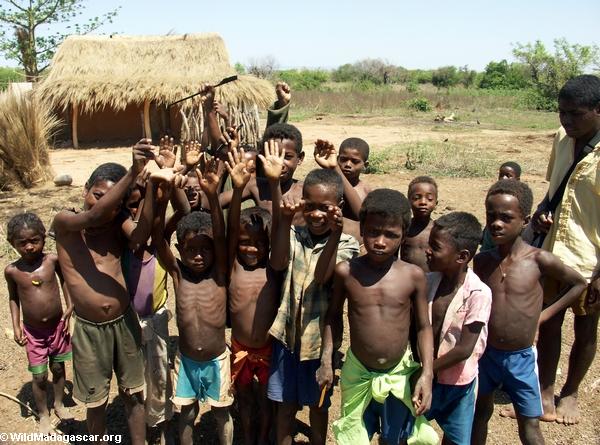42 million children may be hungry in Africa by 2025 — report
International Food Policy Research Institute Release
August 15, 2005

The number of hungry children in Africa will increase by 3.3 million by 2025 if current policy and investment trends continue, according to a new report from the International Food Policy Research Institute (IFPRI).
The report, Looking Ahead: Long-Term Prospects for Africa’s Agricultural Development and Food Security, projects that child malnutrition in Africa will escalate over the next two decades and the continent will fail to meet the Millennium Development Goal to cut child malnutrition in half by 2015 unless more aggressive measures are taken now.
“Child malnutrition is on the rise in Africa. By 2025, hunger could be a daily reality for nearly 42 million children,” said Joachim von Braun, director general of IFPRI. “But it doesn’t have to be this way. With significant changes in policy and investment priorities starting now, Africa could sharply reduce child malnutrition and come close to achieving the Millennium Development Goal on time.”
If current trends continue, child malnutrition in Africa is expected to grow from 38.6 million to 41.9 million by 2025. Sub-Saharan Africa, particularly Burkina Faso, Niger, Somalia, and Sudan, will account for the sharpest increase, but West Asia and North Africa will actually see a decline of 2.3 million hungry children.
|
Poor governance, inadequate infrastructure, limited access to markets, and low investment in agriculture contribute to the underperformance of Africa’s agricultural sector, the report contends. Sound policies and increased investments targeted to these areas, however, can strengthen food security and reduce child malnutrition significantly across the continent. Investments in rural roads and information and communication technologies, such as telephones and the Internet, can lead to more efficient markets and improve farmers’ productivity, while innovative crop, land, and water management practices would encourage more sustainable agricultural production.
The report also projects the impact of improved policies and increased investments. Under the “vision scenario,” the number of hungry children in Africa would decrease dramatically to 9.4 million by 2025 if policies and investments were put in place today to accelerate agricultural productivity and economic growth, reduce population growth rates, and improve access to education, health care, and clean water.
“Our findings reveal that an additional US$4.7 billion per year in investments above “business as usual” investment levels, along with appropriate policy changes, would enable Africa to confront child malnutrition as effectively as the rest of the developing world,” said Mark Rosegrant, division director of environment and production technology at IFPRI and the lead author on the report.
Using state-of-the-art computer modeling, this report projects the supply, demand, price, and trade of 32 major food commodities for five regions of Sub-Saharan Africa and two regions of West Asia and North Africa through 2025. An integrated water-food model is also included to assess current and future water resource availability in Africa. The study evaluates the impact of various policy and investment scenarios–including trade liberalization and increased investments in agricultural research, water, education, and rural infrastructure–on food security and malnutrition.
The report provides a reality check and policy options for African policymakers and the international donor community as they gather at the Millennium+5 Summit in New York City next month to assess progress on the Millennium Development Goals.
“When the United Nations’ member countries meet on September 14, they have the opportunity to make good on the promises made five years ago. They need to decide if they are serious about fulfilling these promises. If they are serious, they need to accelerate the pace of change in Africa,” noted Rosegrant.
The International Food Policy Research Institute (IFPRI) seeks sustainable solutions for ending hunger and poverty. IFPRI is one of 15 Future Harvest Centers and receives its principal funding from 64 governments, private foundations, and international and regional organizations known as the Consultative Group on International Agricultural Research.
This is a news release from The International Food Policy Research Institute.